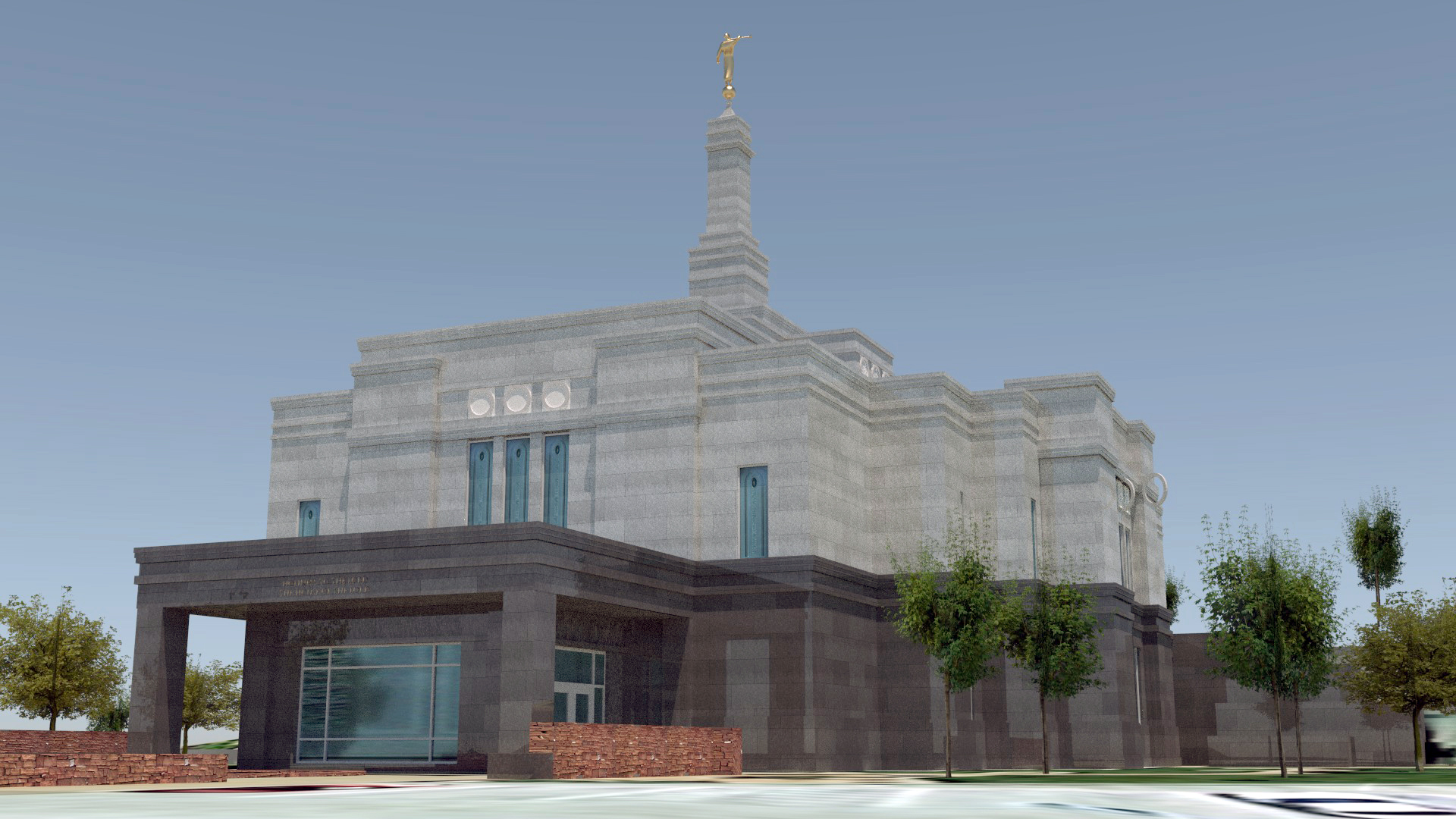
Snowflake Arizona Temple Wiki
Description
The temple district includes Arizona stakes in Snowflake, Taylor, Eagar, St. Johns, Pinetop/Lakeside, Show Low, Flagstaff, Tuba City, Holbrook, Winslow, and Chinle.
History
The town of Snowflake was named after its founder, William J. Flake, and the apostle with charge over the colonization of Arizona, Erastus Snow, who visited the settlement a few months after Flake arrived.
Announcement
President Gordon B. Hinckley announced the Snowflake Arizona Temple on 2 April 2000, at the end of the Sunday afternoon Session of the 170th Annual General Conference. Others were announced at Aba Nigeria, Asunción Paraguay, Helsinki Finland, Lubbock Texas, and the Tri-Cities area of the state of Washington (Later Designated the Columbia River Washington Temple.)[1]Hinckley, Gordon B., “A Time of New Beginnings”, LDS.org, 2 April 2000. Accessed 11 November 2014.
Announced 2000 04 02
Groundbreaking
At the groundbreaking ceremony, President Stephen Reidhead of the Snowflake Arizona Stake related the history of the early pioneers who settled the area, dreaming that a temple would be built there one day. In fulfillment of years of fasting and prayers, those dreams began their culmination at the temple’s groundbreaking. Elder Rex D. Pinegar of the Seventy, who presided at the ceremony, said the temple was the most sacred place on earth. He encouraged members to dissolve any feelings that drew them apart and to gather in the temple where no differences exist. President Norris Baldwin of the Taylor Arizona Stake exhorted members toward worthiness to attend the temple. The gospel of Jesus Christ, he said, leads to brotherhood and sisterhood. “If you want to love God you must love other people.”[2]Church News 30 Sept. 2000.
Open House
Dedication
Dedication Order
The Snowflake Arizona Temple is the 108th temple in the world, and the second temple built in Arizona, following the Mesa Arizona Temple (1927).
Presidents
Details
Location
The site for the Snowflake Arizona Temple is situated on the west end of town on top of a bluff scattered with cedar trees that has become known as “Temple Hill.” Unlike many other recently constructed temples, the temple does not share property with a stake center or Church meetinghouse but is adjacent to a golf course. Approximately 8 feet was removed from the top of the knoll to accommodate the two-level temple, patterned after the Winter Quarters Nebraska Temple, with the lower level partially set into the knoll.
Temple landscaping and plantlife complement the natural surroundings. In front of the temple’s entry canopy is a beautiful water feature.
Exterior
Cladding
Windows
Symbolism
Inscriptions
Cornerstone
ERECTED
2xxx
Spires and Moroni
Spire
Moroni
In March 2017, the angel Moroni statue atop the Snowflake Arizona Temple was replaced. The original statue faced east, looking over the rear side of the building. The new statue was installed facing west, looking over the temple entrance.
Interior
Interior treatments reflect the history and culture of the area. Much of the furniture, for example, has a pioneer appearance similar to that of the Vernal Utah Temple. Several pieces were custom built including some that have Native American designs carved into them. Native American patterns appear as painted stencil work on walls and sculpted into the carpet. A console cabinet featuring a peach tree branch design on the doors is on display. Jacob Hamblin, an early pioneer and missionary, traded goods with Native Americans for peach pits which he planted to grow peach trees. A print depicting Jacob Hamblin meeting with Native Americans on horseback hangs in the temple. A second console cabinet placed in front of art glass windows features a gold-leaf sunburst on each of the three panels. Art glass windows are like those used in the Hong Kong China Temple featuring beveled cuts that create a shimmer of light outside the rooms of the temple. An exquisite set of stained-glass windows depicting Christ instructing a circle of children and adults is on display in the temple interior. Dark cherry wood and painted, light toned wood has been incorporated throughout the building. [3]”Snowflake Arizona Temple Times” Vol. II, pp. 1–2.
Rooms
Individuals and Contractors
Sources and Links
Additional Articles
Sources/Citation
References
| ↑1 | Hinckley, Gordon B., “A Time of New Beginnings”, LDS.org, 2 April 2000. Accessed 11 November 2014. |
|---|---|
| ↑2 | Church News 30 Sept. 2000. |
| ↑3 | ”Snowflake Arizona Temple Times” Vol. II, pp. 1–2. |
